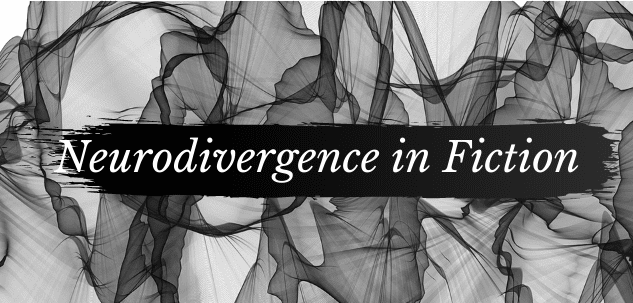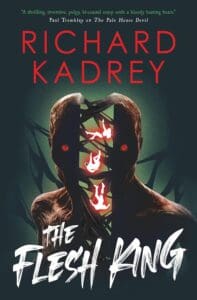
Hello all, and welcome to this week’s article for FanFiAddict’s series on Neurodivergence in Fiction. I cannot understate how appreciative I am for the overwhelming amount of support and enthusiasm I have seen for this series of mine; thank you! For the next several months we will be bringing you a guest post every Wednesday from a neurodivergent author. This will hopefully highlight some of the challenges that come with writing for a largely neurotypical audience, while also giving valuable insight to the craft itself and providing a window into the neurodivergent experience — at least through the lens of fiction. For this week’s article, Ada Hoffman has provided us with a reprint of part two of her publication, Autism, Writing, and Craft. If you need to catch up on part one, you can view that here.
And, without further ado, the article!
This week we’re going to be looking at emotions and communication. In addition to the broad traits of a character, autistic people are known to have atypical emotional reactions to specific circumstances, and to communicate differently than our neurotypical peers. Since writing itself is, by definition, a communicative act, what does that mean for us?
(Note: As I mentioned in Part 1, I am contrasting “autistic writing” with “neurotypical writing,” not because these are the only two kinds of writing – far from it – but because “neurotypical writing” describes the mainstream, with which autistic writing can be most fruitfully contrasted.)
3. Emotions
You don’t have to be in the autistic community for long to know that we experience emotions differently from neurotypicals. An ableist person might tell you that we don’t have emotions at all. This is untrue; our emotions are simply different from the mainstream. We may have very strong reactions to things that are no big deal for neurotypicals, as well as muted reactions to things that are a big deal for them.
Because neurotypical emotional experience is privileged, there’s a kind of double bind where we’re judged for these reactions no matter which side they fall on. If we have a stronger reaction than an NT, we’re overreacting, being “too sensitive,” or even making things up! But if we have a weaker reaction than an NT, we’re uncaring and heartless – especially if the expected NT reaction is very strong.
(A good example of this latter effect is grief, which autistic people often experience less intensely than others, even if we care very much about the person who died. The short story “They Jump Through Fires” is one that does a good job of portraying autistic grief.)
This double bind can affect our ability to write autistic emotional reactions in a way readers will understand. If we write a character having emotions like our own, an NT reader may judge the character harshly for it!
This is further complicated by the fact that many autistic people have atypical facial expressions and body language, combined with expressive speech difficulties, which can make it challenging to get our emotions across in the first place. And many of us experience alexithymia – an inability to name or understand our emotions. An autistic person may feel an emotion very strongly, but not realize they are feeling it – although it may be obvious to an observer who understands our body language. (I didn’t realize that I have a light, bouncing step when I am happy, or that I curl into a ball when I am unhappy, until I was 18 years old and my voice teacher pointed it out.) Or an autistic person may know that they are feeling something very strongly, but be unsure what exactly it is – much less what caused it.
When I was in junior high school and writing execrable Harry Potter fanfiction, I would sometimes write that a character had committed some terrible crime or experienced some terrible loss, and that they “felt nothing.” What I was attempting to do, very clumsily, was to convey a sense of terrible emptiness, maybe a sense that the character was having trouble processing the reality of what had happened, maybe even that they were dissociating (though I wouldn’t have known, at that age, to use any of those words). But readers didn’t pick that up at all. “What a terrible person!” people would say in the comments. “How could they feel nothing? I hate them now!” To an NT, not feeling means not caring – even though autistic people may have many reasons not to have a coherent feeling, in the moment, that they can name.
I’ve found that most commercially successful, #ownvoices autistic books take great care to explain why a character is reacting in the way that they are. Corinne Duyvis’s book “On The Edge Of Gone,” for instance, is the first Big Five #ownvoices autistic book I ever reviewed, and “On The Edge Of Gone”‘s narration is very careful about this. Here is the protagonist Denise, explaining why she doesn’t like to make eye contact:
‘Eye contact? No. Maybe it hurts for some people, but not for me. It’s…’ I’ve tried for years to put it into words. All the things I want to compare it to—music that’s too loud, flavor that’s too strong, images that flash too quickly—are different for other people too, so it never feels quite right….’I can do it for, like, half a second. Anything longer is just too much. Too intense. It scrambles my brain.’ It’s intimate, I think but don’t say aloud.
Any reaction Denise has that might not be intuitive for an NT reader is described and explained in this way – when things overload her on a sensory level, when she melts down, when she is too tired to do what is expected of her.
A writing style like this helps an autistic character’s emotions to be legible to NT readers, but I want to stress the amount of work that goes into having to write like this. Not only does an autistic author have more to explain than an NT author, but an autistic author also has to do a lot of learning about their own autistic responses and the reasons for them, and possibly overcome their own alexithymia. None of this is automatic and we’re not born knowing it, especially not in the very articulate way Duyvis does. We have to learn these things consciously, and we often don’t have support in learning them from other NTs – for a lot of people, even with therapy, concepts like “why eye contact doesn’t feel good” are hard to articulate until we see them articulated in the autistic community.
This work, both of learning and of explaining, can be fraught. Many of us are leery of becoming “self-narrating zoo exhibits” – token autistic people whose only function is to explain our strange, exotic, mysterious ways to NTs. (And sometimes – as in Xan West’s essay that I linked to last week – no explanation is ever enough.) Many autistic activists get trapped in this pattern where we want to help by explaining ourselves to NTs, but find that no matter how we explain, it doesn’t increase NTs’ interest in our wellbeing and rights – only their curiosity. It’s no wonder if such experiences leave a bad taste in our mouth when trying to write for NTs.
Even for authors like Duyvis who are interested in making autistic emotions legible, learning to do so involves a lot of work and a lot of pain. NT authors have to work to describe their emotions intelligibly, too – no one is born with this skill – but for them, that work is much less fraught and much less challenging.
4. Communication
Autistic people have a characteristically straightforward way of communicating. Many of us have difficulty lying. Some of us have difficulty with sarcasm and hyperbole. Many of us will respond literally to questions like “How are you?” – earnestly describing our actual mental state instead of giving the scripted answer that NTs expect.
A piece of writing advice I sometimes see floating is: “Characters should never say what they are thinking or feeling directly. People don’t say what they are thinking or feeling directly in real life. The dialogue will feel stilted, like the dialogue from a soap opera, if it is too direct. Instead, make your characters dance around what they’re feeling. Have them communicate indirectly, like real people.”
I see this writing advice more often in discussions of literary fiction than genre fiction. But I occasionally see it in genre fiction advice as well, especially for the kinds of stories that have a more literary style, and in reviews of the kinds of movies that are famous for having bad dialogue.
Autistic people sometimes do have reasons not to say what we are feeling, especially if we know that it’s something an NT might react badly to. If we are masking, then we might work hard at finding ways to phrase our thoughts that will be acceptable to an NT. For instance, we might learn that the right response to “How are you?” is “Fine,” and then form a habit of answering that way even though it doesn’t feel natural. There’s nuance to this! But when there isn’t a specific reason, my autistic characters usually just say what’s on their minds, and I think most other autistic authors are similar.
Autistic people are also famous for communicating in monologues or infodumps – giving a large amount of information about a topic all at once. Infodumps are a big enough topic, with enough nuance in how they affect a writing style, that I’m going to be saving them for part 3.
5. Echolalia and Wordplay
I don’t see this in autistic prose writing as often as I see these other things, but many of us love to communicate in puns, in scripts and quotes and references, or by stimming with the sound of a particular syllable, repeated again and again, with or without variation. Autistic people love the feel and structure of language in a different way than the way NT writers love it.
I once had my mind blown by a very bold and striking poem that I read on someone’s blog. It was about the pressure to communicate like an NT, and resisting that pressure, and it was written in a gleefully autistic, stimmy way, with the same word repeated over and over again or the same syllable played with, again and again, with small variations. It was absolutely wonderful. I neglected to bookmark it, forgot the title and author, and was never able to find it again.
In lieu of that, I am also thinking about stylistic experiments such as Michael Scott Monje Jr.’s The Us Book, a very odd volume which is part essay collection, part poetry, uses variations in indentation and enjambment to represent different members of a plural system, and brashly announces that no one will be able to understand it unless they read it aloud to enjoy the feel of the words in their mouth, as well as reading all the author’s other works in a certain order. Or Meda Kahn’s “Difference of Opinion,” which depicts the main character, Keiya, stimming with her favorite song lyrics, weaves those lyrics into the narrative, and becomes more and more disjointed the more distressed Keiya becomes:
Hey What’s Wrong
Keiya holds out her empty hands, trying to mime, except she’s shaking all over. Leaflike. Not that we’ve got leaves up here.
Morit is like “Are You Okay” and Keiya stares at her all, What is Okay, what does that word even Mean, how could I possibly be expected to answer this question. Morit is like, “Oh,” and puts a hand on Keiya’s shoulder presses down hard and leads her in. Closes and locks the door behind them. She remembered, Keiya thinks through the fizz of her upset. She remembered about deep pressure, no light touches.
Non-litches can learn, ha ha.
Many of Keiya’s thoughts in this story are conveyed simply by repeating her favorite song lyrics, showing by comparison how those lyrics apply to the situation.
Obviously, not every autistic person will want to read or write in ways that experimentally play with language. Some of us prefer clear, straightforward prose that always means what it says literally. But for those that are inclined to it, I think the ability to play with language in non-neurotypical ways is one of the autistic writing community’s greatest strengths. Literary critics want work that pushes the bounds of what language can do; autistic people who struggle to understand language neurotypically can innovate simply by using it, instead, in the way that comes naturally to them.
We’ve got one more part to go in this 3-part series! Next week I’ll talk about infodumps, and then I’ll talk about different strategies autistic authors might use to cope with a publishing landscape in which some of our natural storytelling tendencies are different from what NT editors and readers expect.
About the Author

Ada Hoffmann is the author of the space opera novel THE OUTSIDE, the collection MONSTERS IN MY MIND, and dozens of speculative short stories and poems. Ada’s work has been a finalist for the Philip K. Dick Award (2020, THE OUTSIDE), the Compton Crook Award (2020, THE OUTSIDE), and the WSFA Small Press Award (2020, “Fairest of All”).
Ada was diagnosed with Asperger syndrome at the age of 13, and is passionate about autistic self-advocacy. Her Autistic Book Party review series is devoted to in-depth discussions of autism representation in speculative fiction. Much of her own work also features autistic characters.
Ada is an adjunct professor of computer science at a major Canadian university, and she did her PhD thesis (in 2018) on teaching computers to write poetry. She is a former semi-professional soprano, tabletop gaming enthusiast, and LARPer. She lives in eastern Ontario.




As a fellow autistic this makes me so happy to see. Great job once again.
💚💚💚
I continue to lovelovelove this series. Ada’s comments on echolalia and wordplay particularly hit home for me.